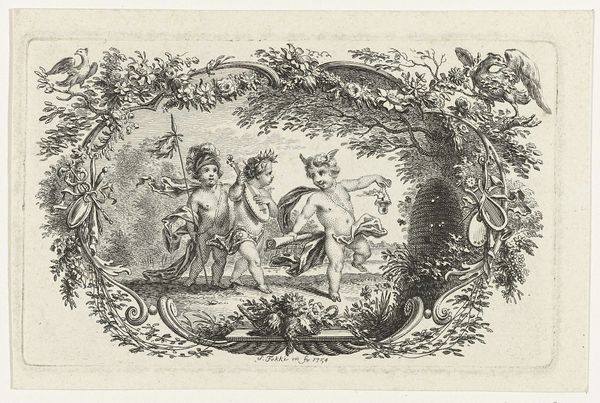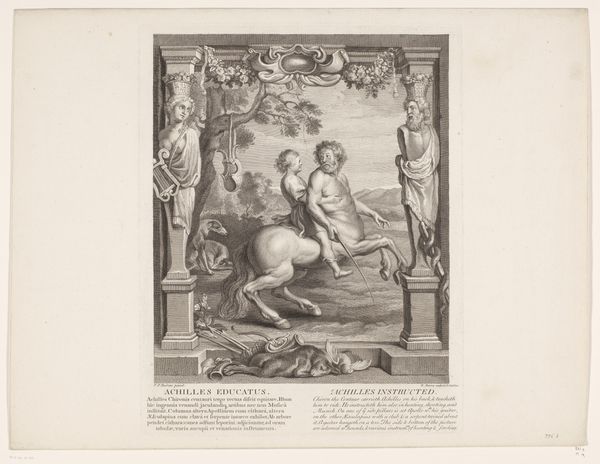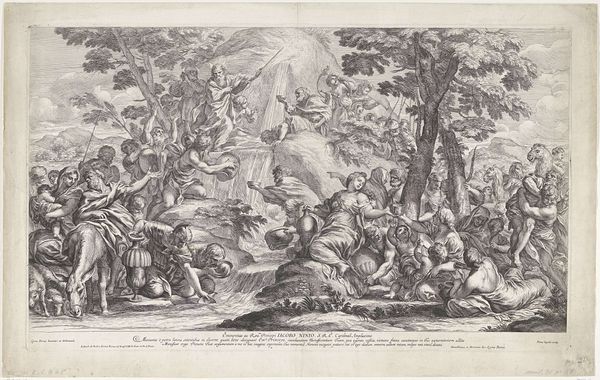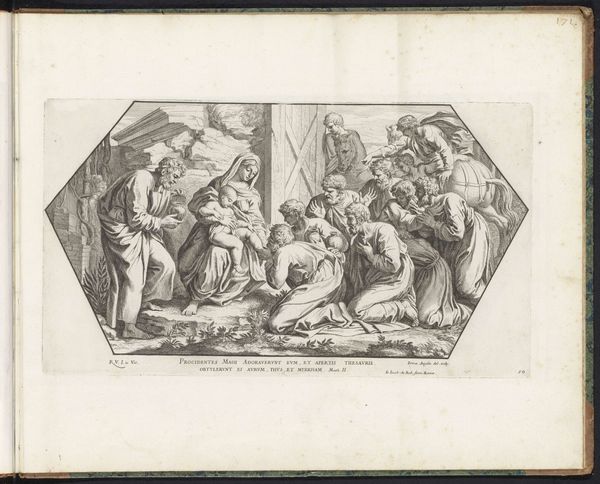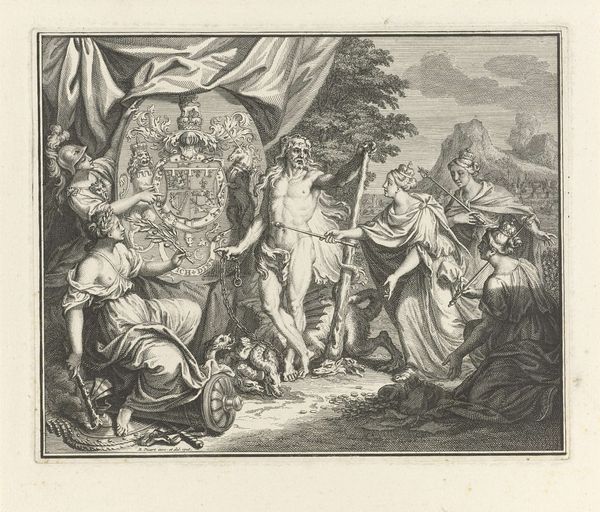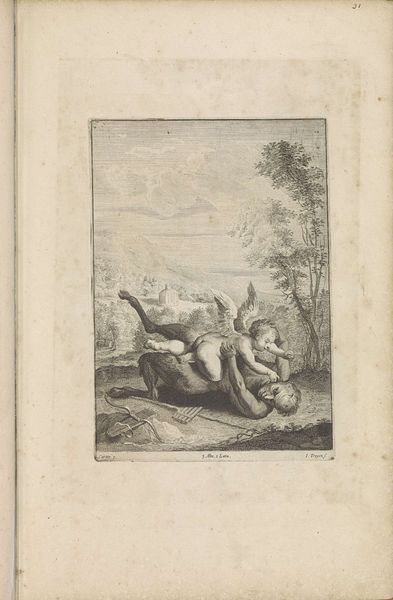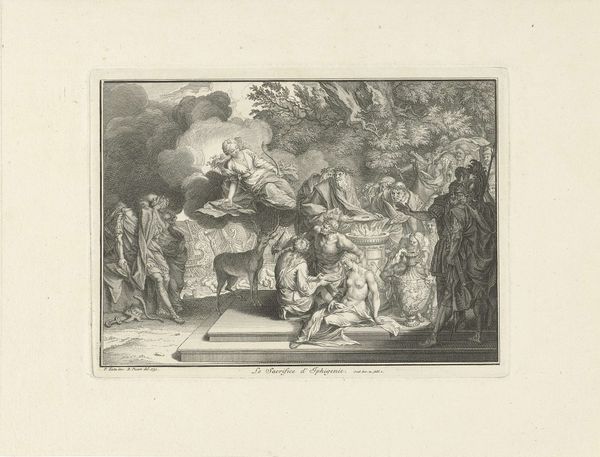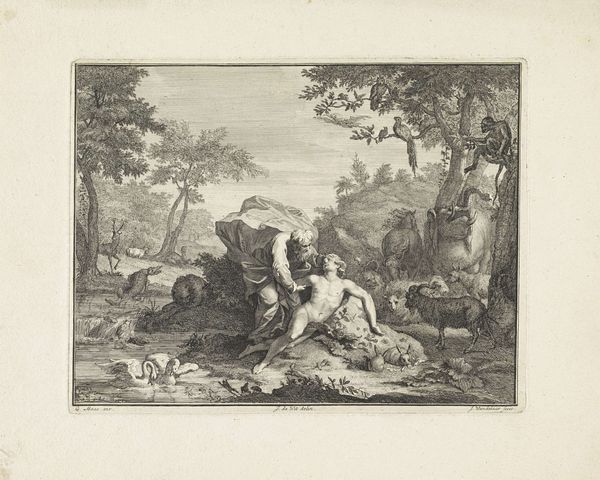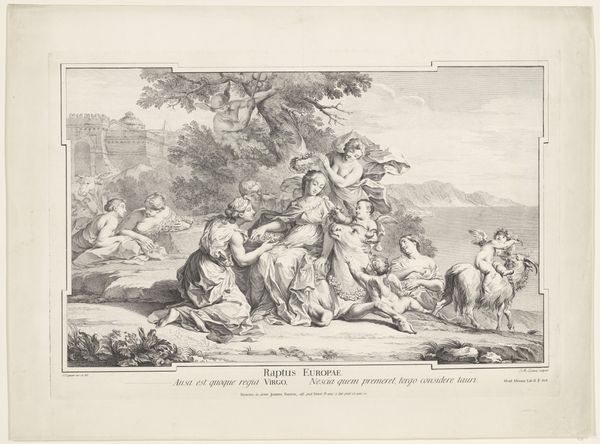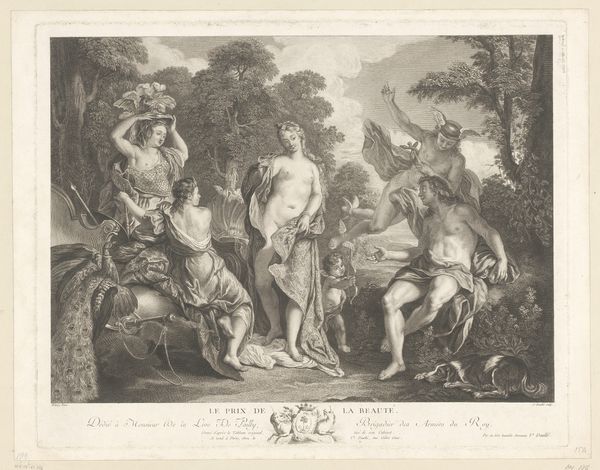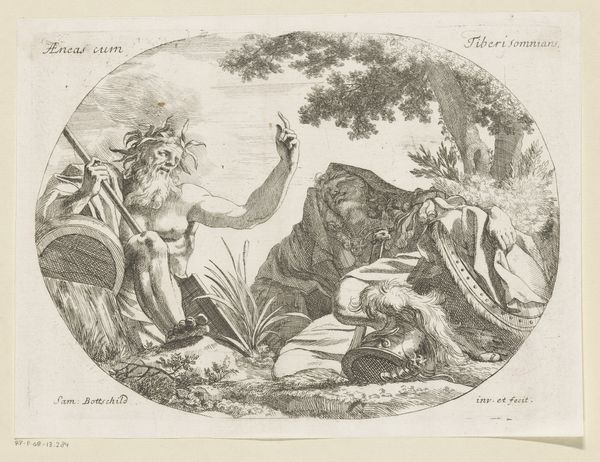
print, engraving
#
allegory
#
baroque
#
pen drawing
# print
#
greek-and-roman-art
#
old engraving style
#
landscape
#
figuration
#
history-painting
#
engraving
Dimensions: height 282 mm, width 462 mm
Copyright: Rijks Museum: Open Domain
Editor: Here we have Pietro Aquila’s engraving, “Hercules (Alcides) en de sfinx,” made before 1692. The stark contrast of the engraving lends a dramatic tension to the scene. How do you interpret the relationship between Hercules and the Sphinx within this composition? Curator: What strikes me immediately is how Aquila uses Hercules’s victory over the Sphinx to comment on power, knowledge, and societal structures. Consider how the conquered Sphinx, a creature symbolizing enigmatic wisdom, is literally under Hercules's arm. Hercules, representing brute strength, has silenced her. Is Aquila suggesting something about the silencing of marginalized voices by dominant powers? Editor: That's a really interesting point. I hadn't thought about it in terms of silencing voices. It’s like the triumph of force over intellect. Curator: Precisely. And let’s delve deeper. The allegory extends beyond the individual. Look at the social context of the Baroque era. Does this engraving implicitly endorse a patriarchal power structure, where rational masculinity subdues feminine wisdom and intellectual inquiry? How does that reflection impact our interpretation? Editor: So, it is not just a mythological scene; it’s a statement about the social order. Given that the work was made before 1692, could we relate this suppression to gender roles within artistic production itself at the time? Curator: Absolutely! Reflect upon female artists then. How were their contributions and perspectives treated versus their male contemporaries? This image becomes part of a much larger conversation about representation, authority, and who gets to control the narrative. Editor: It’s fascinating to think about how much a single image can reveal about power dynamics when viewed through a critical lens. Thanks for expanding my understanding! Curator: And thank you for prompting this reflection on how the art of the past continues to inform our present.
Comments
No comments
Be the first to comment and join the conversation on the ultimate creative platform.

